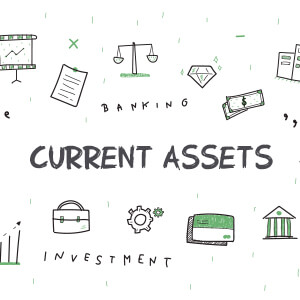What Are Current Assets?
It should be in our best interest that the “Current Assets” are valued and mentioned in the balance sheet of the organization. Such elements are comprised of all the assets that liquidate on instant basis and are sold in the markets in one year’s tenure.

Furthermore, the term “Current Assets” is further broken down into “Cash” and “Cash Equivalents”, whereas other categories that emphasize over their presence are “Marketable Securities”, “Accounts Receivable”, “Prepaid Expenses” and “Inventory”. These business elements are named as the “Current Accounts” in the UK.
How Important Are Current Assets?
The sources have confirmed that “Current Assets” are considered imperative in the business’s perspective, because these elements assist in running operations on a regular basis and eradicating the piled up expenses for the company.
Depending on what our business manufactures or produces, the “Current Assets” can either be considered as the barrels of crude-oil, baked products at a local confectionary and foreign currency for the citizens. It does reflect the nature of our business and are written as per their potential to liquidate in the markets, making it easier for the auditors to figure things out.
Current Assets In Personal Finance:
It is worth mentioning that the “Current Assets” in personal finance are shaped up into “Cash in Hand” and the total funds available in the bank account. However, marketable securities are not included in the list, especially if there’s a long term investment to be made.
There are various experts who claimed upon calling “Current Assets” as those elements that are induced with the potential to liquidate into cash in an hour of need, in particularly when companies are on the verge to pay off their outstanding debts and other liabilities etc.

